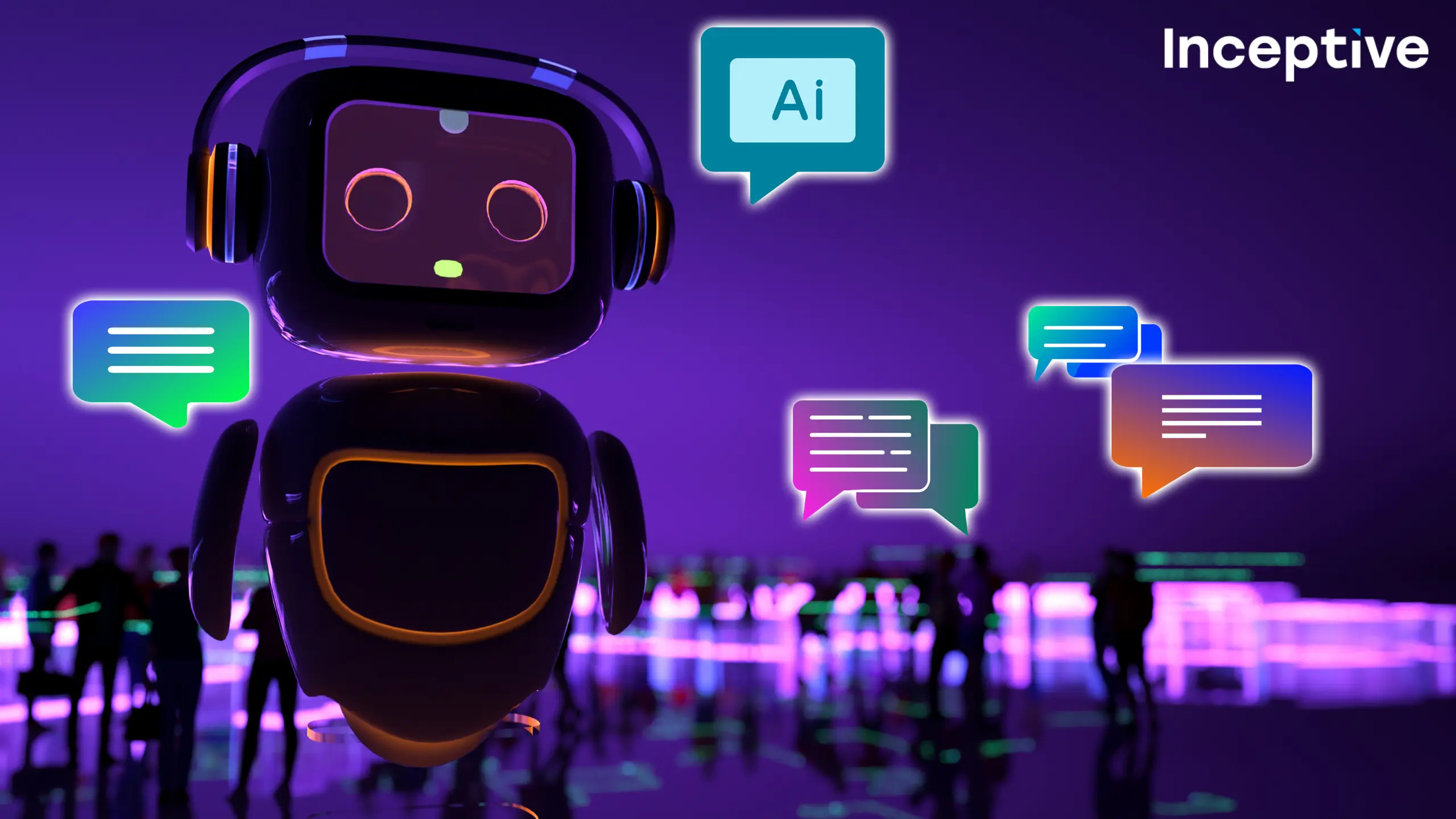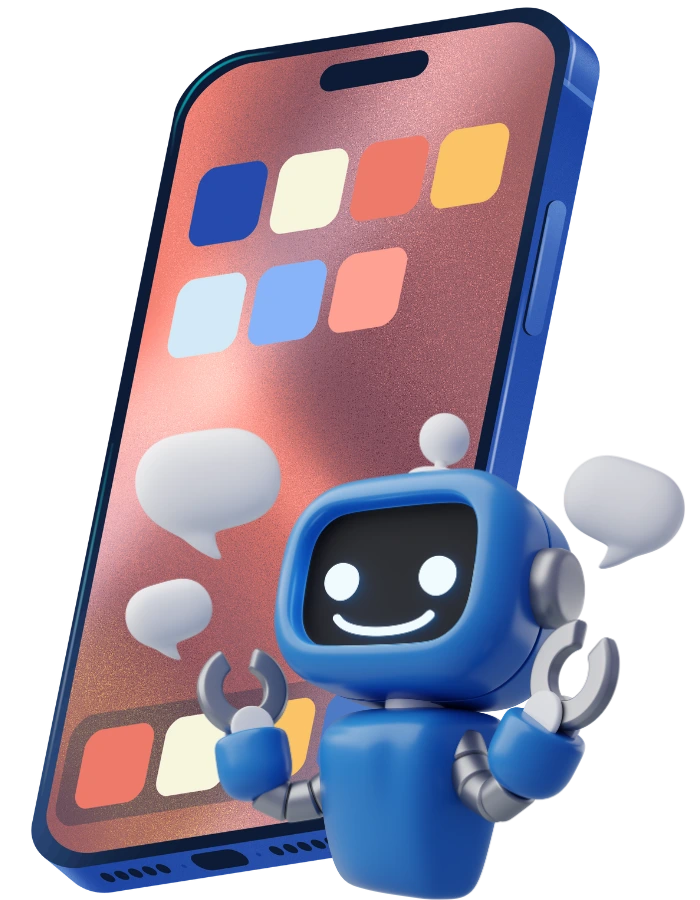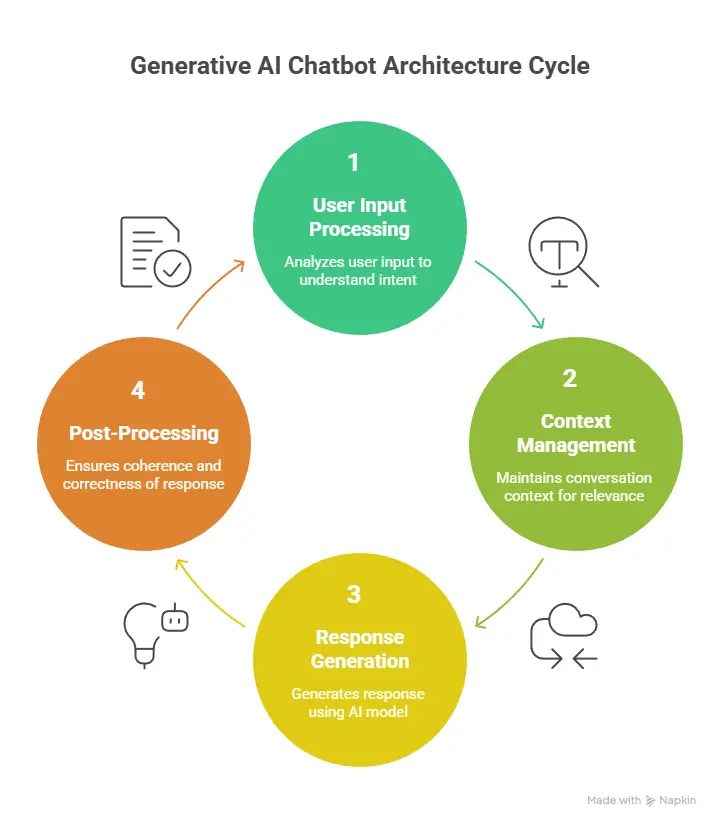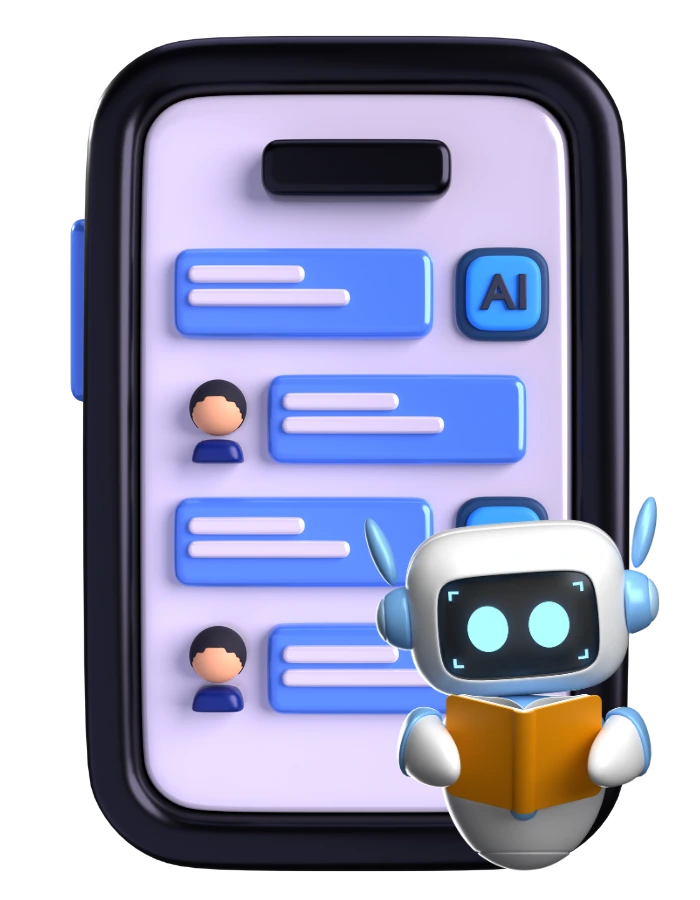In today’s digital world, artificial intelligence (AI) is revolutionizing the way businesses engage with their customers, and one of the most exciting applications of AI is the generative AI chatbot. These intelligent bots, powered by advanced algorithms, can simulate human-like conversations and assist with customer support, marketing, and even personal assistance. Building a generative AI chatbot is a highly technical process that involves various stages, from understanding the requirements to deploying and continuously improving the bot.

In this guide, I will walk you through the steps to build your own generative AI chatbot, explaining the tools and techniques involved, as well as offering insights from my personal experience. By the end of this blog, you will have a comprehensive understanding of how to create a chatbot that can engage in dynamic, context-aware conversations with users.
1. Understanding Generative AI Chatbots
Before diving into the process of building a generative AI chatbot, it’s crucial to understand what these bots are and how they work.
Generative AI chatbots are designed to produce human-like responses based on the input they receive. Unlike traditional chatbots that rely on pre-programmed scripts, generative models use deep learning techniques, specifically neural networks, to generate responses dynamically.
These chatbots can understand context, maintain conversational threads, and produce responses that feel natural. They are often trained on large datasets to help them learn language patterns and nuances.
2. Choosing the Right Tools and Frameworks
Building a generative AI chatbot requires specialized tools and frameworks. Here are some of the most widely used options:
-
GPT-3 and GPT-4 by OpenAI: These models are among the most powerful generative language models. They can understand and generate human-like responses based on the input.
-
Rasa: An open-source platform for building conversational AI. It’s perfect for those who need to develop highly customizable chatbots that are capable of understanding context.
-
Google Dialogflow: A conversational AI development suite that leverages Google’s cloud infrastructure to create chatbots with natural language processing (NLP).
-
Microsoft Bot Framework: This framework offers tools to design, test, and deploy intelligent bots on a variety of platforms.

3. Setting Up Your Development Environment
Once you’ve chosen the platform, setting up your development environment is the next step. The following are general prerequisites for building a generative AI chatbot:
-
Programming Language: Python is the most commonly used language for AI-related tasks. You may also need JavaScript if you plan to integrate the bot into web applications.
-
Libraries and Frameworks: Some essential libraries include TensorFlow, PyTorch, and HuggingFace’s transformers. These libraries help with training models and processing natural language.
-
Cloud Platform (optional): To scale your bot and deploy it, you might use cloud services like AWS or Google Cloud, which offer machine learning infrastructure and APIs for seamless integration.
4. Designing the Chatbot Architecture

The architecture of a generative AI chatbot consists of several layers, each responsible for different tasks. Here’s a breakdown of a basic architecture:
-
User Input Processing: The first layer processes the user’s input to identify the intent and extract key entities. This step often uses NLP models to break down the user’s query into understandable components.
-
Context Management: This component keeps track of the conversation’s context, allowing the bot to remember previous interactions and generate more relevant responses.
-
Response Generation: Using a generative model (like GPT-4), this layer generates a response based on the input and context.
-
Post-Processing: The final layer post-processes the response to ensure that it is coherent, grammatically correct, and contextually appropriate.
5. Training the Model
Training the generative model is one of the most critical steps in building a chatbot. Here’s how you can train a generative AI chatbot:
-
Dataset Collection: The first step in training any AI model is to gather a large, diverse dataset. For a chatbot, this could include dialogues, customer service transcripts, or other conversational data.
-
Data Preprocessing: The data needs to be cleaned and formatted before training. This involves removing irrelevant content, handling missing values, and converting text into a format that the AI model can understand.
-
Fine-tuning the Model: If you’re using a pre-trained model like GPT-4, you’ll need to fine-tune it on your specific dataset. Fine-tuning adjusts the model’s weights based on the new data, making it more suitable for your specific use case.
-
Evaluation and Iteration: After training, evaluate the chatbot’s performance. Does it understand the context? Are the responses natural and relevant? Based on the evaluation, fine-tune the model further.
6. Integrating the Chatbot with Messaging Platforms
Once the chatbot is ready, the next step is integrating it with various messaging platforms like Slack, Facebook Messenger, WhatsApp, or even your website. This allows your chatbot to interact with users in real-time.
-
APIs: Most platforms provide APIs for integrating bots. You’ll need to write code that connects your AI model to these APIs, allowing the bot to receive and send messages.
-
Webhook Integration: Webhooks can help you handle events in real-time. For example, if a user sends a message, the webhook triggers the chatbot’s response generation.
-
User Authentication (Optional): In some cases, you may need to authenticate users (e.g., through OAuth or API keys) before allowing access to specific chatbot functionalities.
7. Testing and Improving Your Chatbot
Testing is an essential part of chatbot development. Here’s how you can test your generative AI chatbot:
-
Unit Testing: Test individual components of your chatbot, such as input processing, context management, and response generation.
-
End-to-End Testing: Simulate real conversations to check if the bot can handle various queries and scenarios. It’s essential to test for edge cases and ensure the bot doesn’t break under unexpected inputs.
-
User Feedback: Collect feedback from real users to identify areas for improvement. Continuous feedback helps you fine-tune the bot and ensure it provides a positive user experience.

8. Deploying the Chatbot
Once testing is complete and the chatbot performs well, it’s time to deploy it. If you’re using a cloud platform, deployment typically involves:
-
Containerization: Using Docker to create containers that encapsulate the chatbot’s environment, ensuring it runs consistently across different platforms.
-
CI/CD Pipeline: Set up a continuous integration and deployment pipeline to automatically test, build, and deploy updates to the chatbot.
-
Monitoring: Set up monitoring to track the chatbot’s performance and catch any issues early. Tools like Prometheus or Grafana can help with monitoring and alerting.
9. Continuous Improvement
Even after deployment, a generative AI chatbot requires ongoing maintenance and improvement. Here are a few strategies to continuously enhance the chatbot’s performance:
-
Retraining the Model: As more data comes in, retrain the chatbot’s model to keep it up-to-date with new language trends, phrases, and user preferences.
-
A/B Testing: Conduct A/B tests to compare different versions of the chatbot and see which one performs better in terms of user engagement and satisfaction.
-
Adding New Features: As your business grows, add new features to your chatbot, such as voice support or multilingual capabilities.
FAQs
-
What is a generative AI chatbot?
A generative AI chatbot is an AI-powered system that generates human-like responses based on input, using deep learning models like GPT-3 and GPT-4 to create contextually relevant answers. -
How do I train a generative AI chatbot?
Training involves gathering large datasets, preprocessing the data, fine-tuning a pre-trained model, and evaluating the bot’s performance to ensure it responds naturally. -
What tools are best for building a generative AI chatbot?
Some popular tools for building AI chatbots include OpenAI’s GPT models, Rasa, Dialogflow, and the Microsoft Bot Framework. -
How can I improve the performance of my generative AI chatbot?
Continuous testing, user feedback, retraining with updated data, and adding new features like voice support or multilingual capabilities can help improve performance. -
Can a generative AI chatbot understand complex queries?
Yes, generative AI chatbots, especially those built on advanced models like GPT-4, can understand complex queries, follow conversation threads, and provide dynamic, context-aware responses.
Resource Center
These aren’t just blogs – they’re bite-sized strategies for navigating a fast-moving business world. So pour yourself a cup, settle in, and discover insights that could shape your next big move.
Why Businesses Prefer to Hire .NET Developers for Scalable Enterprise Applications?
In today’s enterprise landscape, scalability is no longer a technical advantage—it is a business necessity. Organizations operating across multiple regions, serving large user bases, or managing complex workflows require [...]
What are the Top Benefits of Hiring Dedicated Web Developers for Your Business Growth in 2026?
As digital ecosystems grow more complex and customer expectations continue to rise, businesses in 2026 are under constant pressure to deliver high-performance, secure, and scalable web solutions. Off-the-shelf software [...]
Hire Full Stack Developers: A Complete Guide to Building Modern Web Applications Faster
In today’s digitally driven economy, speed, scalability, and technical agility define the success of modern web applications. Organizations across industries are under constant pressure to launch feature-rich platforms faster, [...]

